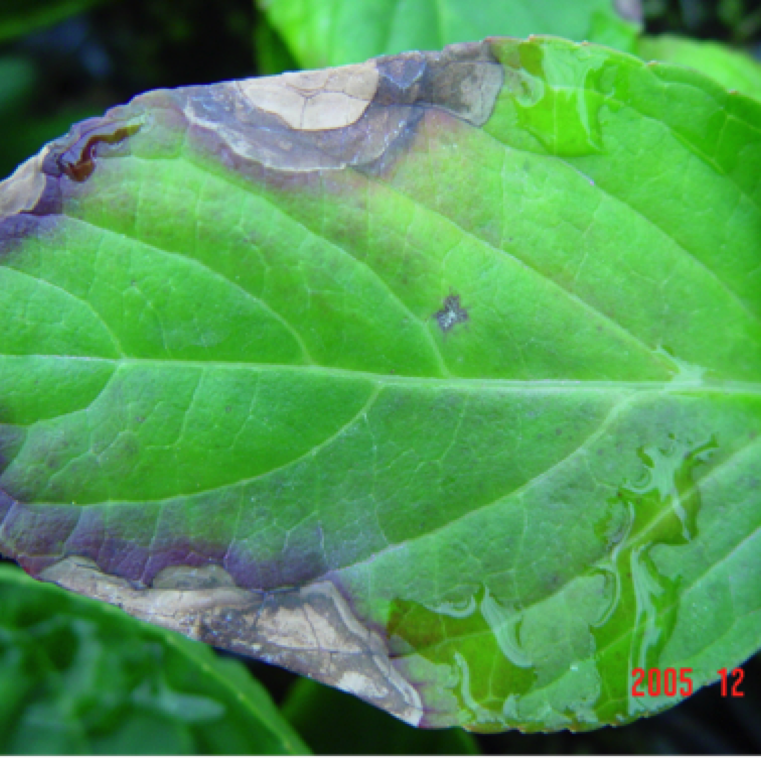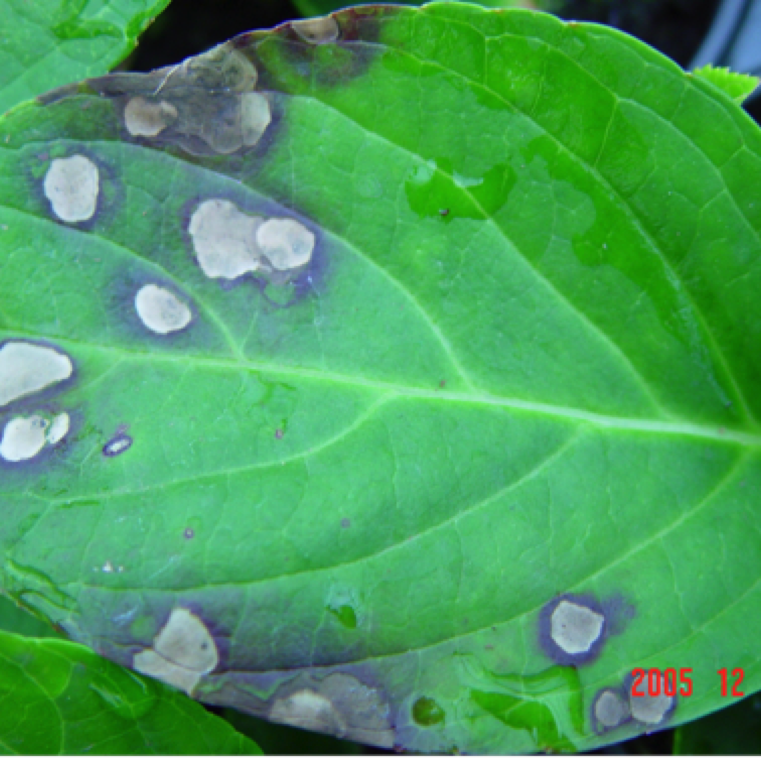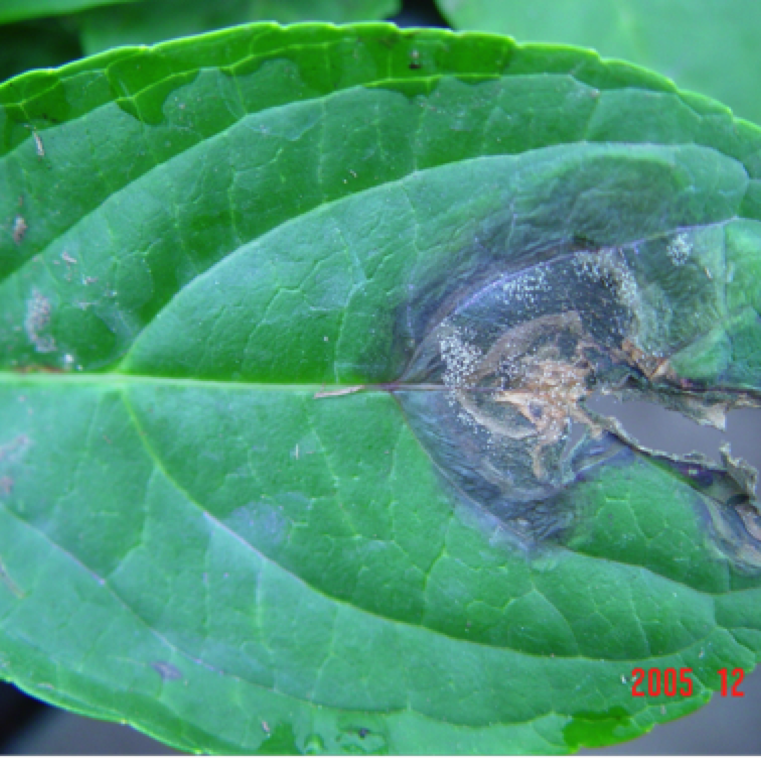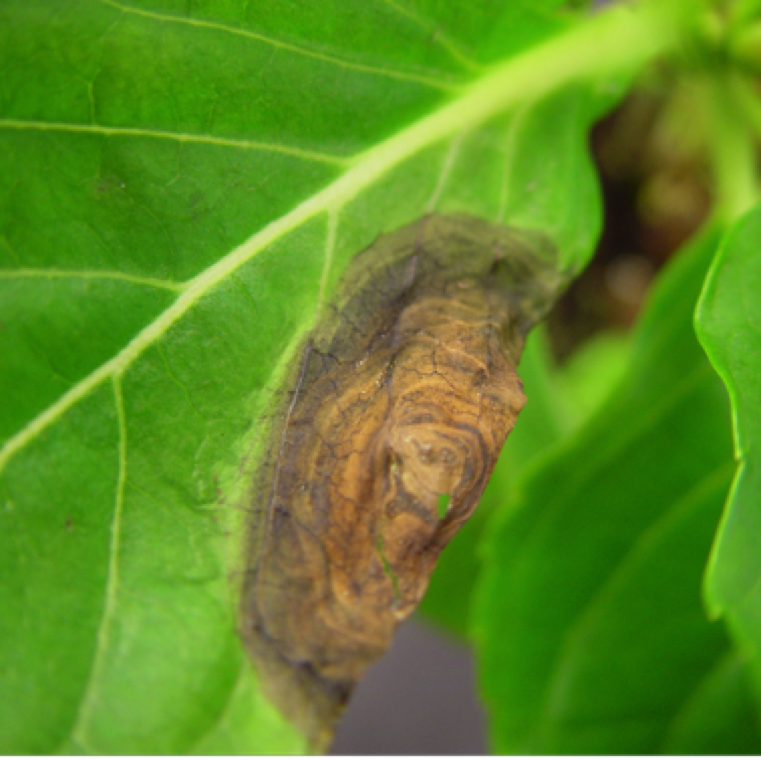


The disease is primarily seen in greenhouse production, but can also be seen in the landscape production. Cloudy humid conditions for several days favor disease development. All hydrangea species are susceptible to the disease.

The symptoms start with irregular patches on leaves which typically has a white center and black outer pattern. Subsequently, the patches appear as a burn-like patches on the leaves.

The leaf symptoms include large water-soaked appearance followed by blighting of the leaf. The water-soaked regions can also expand to form reddish brown spots.

Symptom on the margin of the leaf may appear as in the picture shown here. The disease can develop overnight under ideal environmental conditions. Cool and wet conditions favor rapid growth and reproduction of the pathogen.
BOTYRITIS BLIGHT (GRAY MOLD)
Fungal causal agent: Botrytis cinerea
Hydrangea diseases

